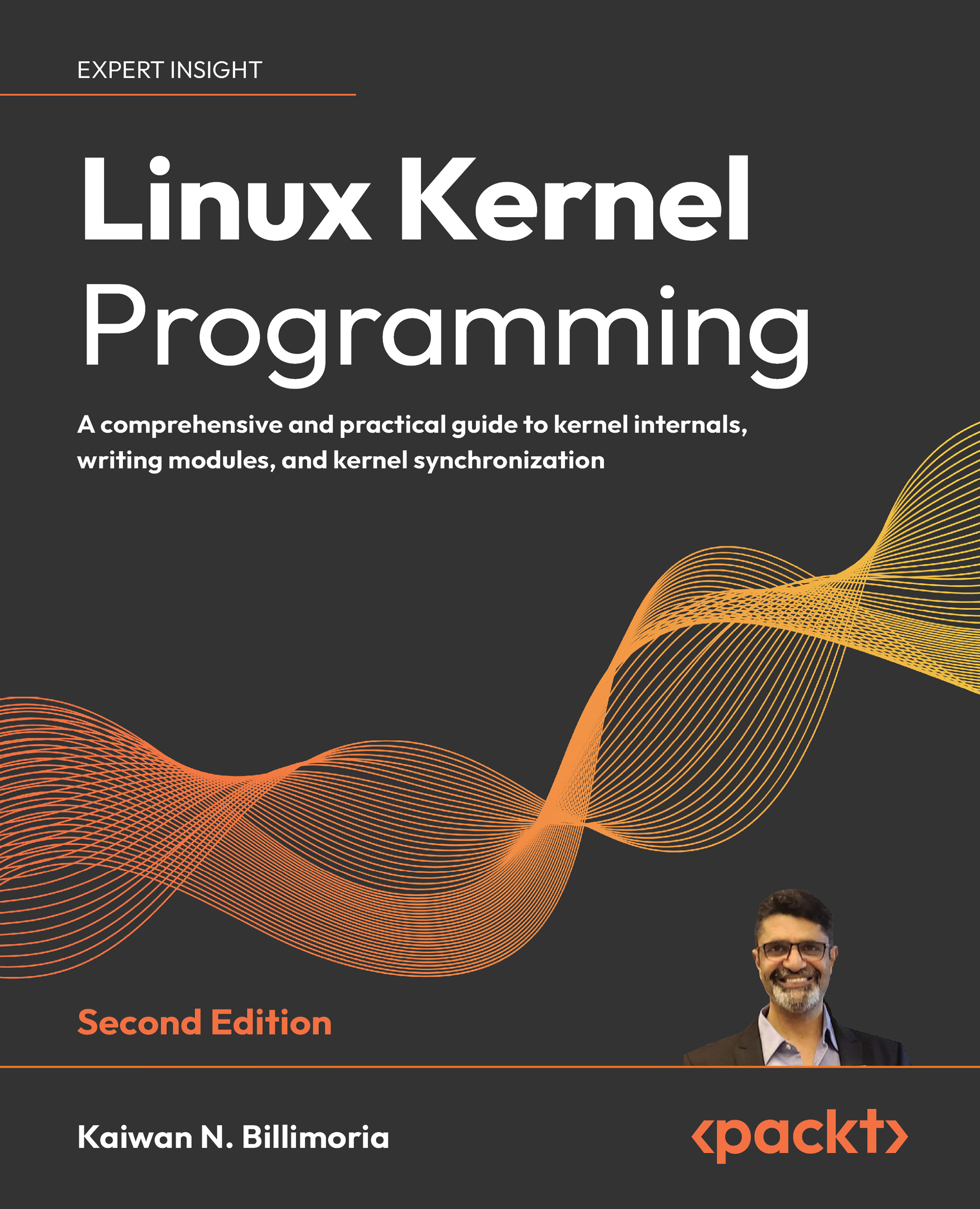Summary
In this chapter, you learned about several areas and facets of the versatile Linux kernel’s CPU (or task) scheduler. Firstly, you saw how the actual KSE is a thread and not a process. We also learned that, in a monolithic OS like Linux, there is no “scheduler” thread within the kernel: scheduling is performed by a process context thread – the current thread – running the scheduling code paths, itself context-switching to the next task when done (thereby kicking itself off the processor – of course, the timer interrupt softirq housekeeping code paths have a key role to play in scheduler-related housekeeping as well!).
We then gained an appreciation of the available scheduling policies that the OS implements. Next, you understood that to support multiple CPUs in a superbly scalable fashion, the kernel powerfully mirrors this with a design that employs one runqueue per CPU core per modular scheduling class (again, the cgroups framework...
































































